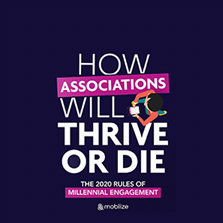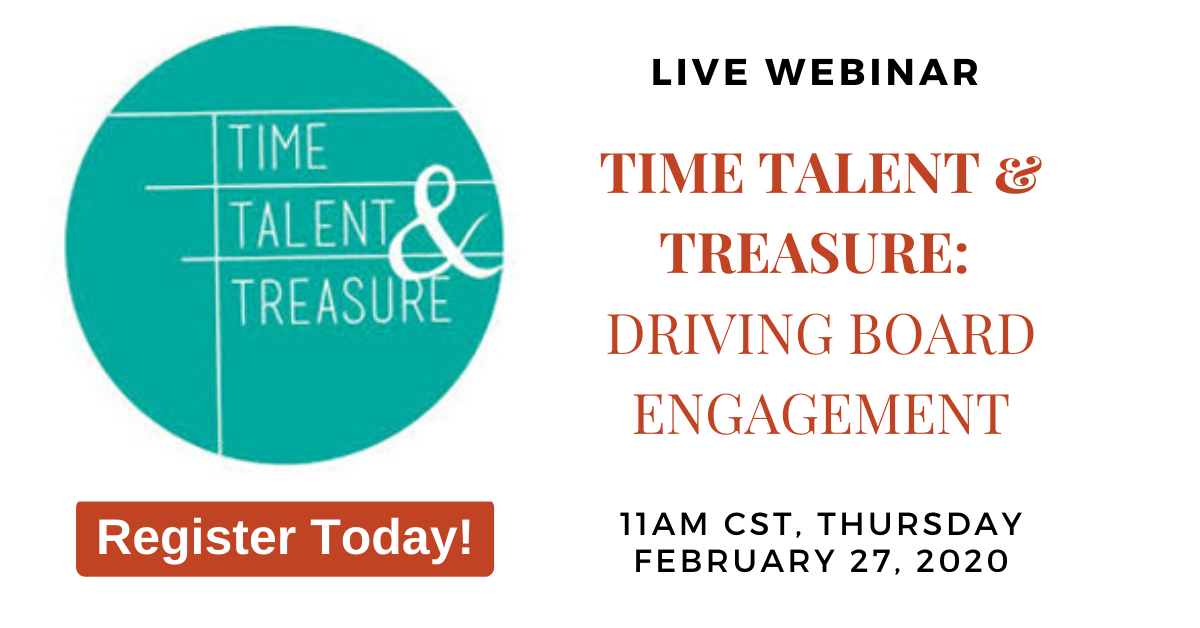“the dilemma: old skills, techniques and approaches are not only ineffective, they exacerbate the problem. Traditional marketing turns off this generation. Content shouldn’t cost money. One-to-many communication is ignored at best and reviled at worst.”
~Dave Hersch, CEO at Mobilize
Millennials currently represent 50% of the workforce and that will rise to 75% in 2025, but they only represent 19% of association membership.
With 2020 kicking off a new decade, membership-based organizations need to consider how to engage with a generation that desires Purpose, Community and Simplicity. Millennials are hyper-connected and love building social ties and collaborating. Humans have an inherent need to connect and belong, but Millennials are changing how it happens.
Social media continues to erode memberships. How can associations be relevant to Millennials?
According to the Gallup Report: What Millennials Want From Work and Life, there are four themes that describe common traits of this generation: Unattached, Connected, Unconstrained and Idealistic.
Unlike previous generations, Millennials don’t feel attached to jobs or brands and are less likely to feel pride in their communities or to identify with particular religious affiliations or traditional political parties. Growing up with the Internet, Millennials access entertainment, news, and friends, and state the Internet is the main source for news and information. They push for change in the world—in the marketplace and workplace. They don’t accept “that’s the way it has always been done” as a viable answer. Millennials believe that life and work should be worthwhile and have meaning. Professional development and growth opportunities are very important to them in a job. They approach the workplace with “What’s in it for me?” and want more out of life and they believe they can get it.
In the whitepaper, How Associations Will Thrive or Die: The 2020 Rules of Millennial Engagement, David Hersch, Ben Martin and Alexis Luscutoff share how associations can understand Millennial characteristics and embrace a new, enlightened model of engagement. The authors share that the Hub and Spoke model where organizations are the center and curate content and act as the gatekeeper for connections can alienate Millennials.

The “one to many” communication strategy conflicts with how this generation likes to engage. To cultivate relationships with the next generation of members, associations should develop strategies where members can learn, discover and make connections without friction or walls. The good news is that these new rules for engagement are not just for Millennials but deepens participation from other generations as well.

2020 Rules for Engagement
Hersch, Martin and Luscutoff propose that associations embrace four new strategies to attract and engage Millennials to help win their hearts and hopefully, their memberships.
1. Think Digital, Act Human — by using these 4 pillars to engage Millennials:
• Mobile — provide access to whatever, whoever and whenever by using technology that is simple, frictionless, automatic, helpful and mobile.
• Mission — Millennials have a deep sense of purpose and so should you. Align everything you do with the purpose of your organization and that of each individual. Make them feel seen, heard and valued through the interface you use.
• Modern — Use an interface that isn’t too feature-rich and complicated. Technology should be user-friendly. Challenges like registering for events can turn off future engagement.
• Membership — Savvy Millennials are wary of joining new online communities. Let them test out a free version before they commit, help them to build trust and experience the benefits of membership.
2. Change the Funnel — The old model of attracting new members are based on traditional forms of marketing like direct mail, calls and visits, invitations to events with the hope of conversion. But it doesn’t work with Millennials. Offer a free membership tier that allows users to try before they buy and have a chance to make connections and see what’s available to them. A best practice shared is the Texas Computer Education (TCEA) that created a free membership tier which doubled their base, increased non-dues revenue and strengthened their lobbying efforts.
3. Human Nature & Nurture — Millennials want to feel like they’re part of something bigger or a movement that matters. Instead of making your organization the center, create a community-centered model and nurture that community. Practice personalization to get the right content to the right people at the right time. The best organizations are obsessed with listening, getting feedback and improving the overall community experience. Facilitating behind-the-scenes engagement is just as important as those that occur face-to-face.
4. A New Kind of Leadership — Winning the hearts of Millennials requires giving them a sense of belonging and encouraging them to become leaders within the community. Encourage organic conversations among members and for Millennials and Gen Z members to act as community leaders. They can respond to questions posed by other members and encourage other members with information to provide their insights rather than waiting for an official spokesperson from your organization. Encourage dialog and for members to act as Conversation Starters.
If you want to create a community of tomorrow’s members, focus on ways to foster belonging and human connection. Create opportunities for engagement where you are not the gatekeeper. The more people engage, the more loyal they will be to your community and the organization.
Cathi Hight helps organizations manage constant change, develop customer-centricity and “work smarter, not harder”. She is President of Hight Performance Group and the developer of The Member Retention Kit, A New Approach to Tiered Membership, and Work Smarter, Not Harder. Learn more at www.hightperformance.com.


